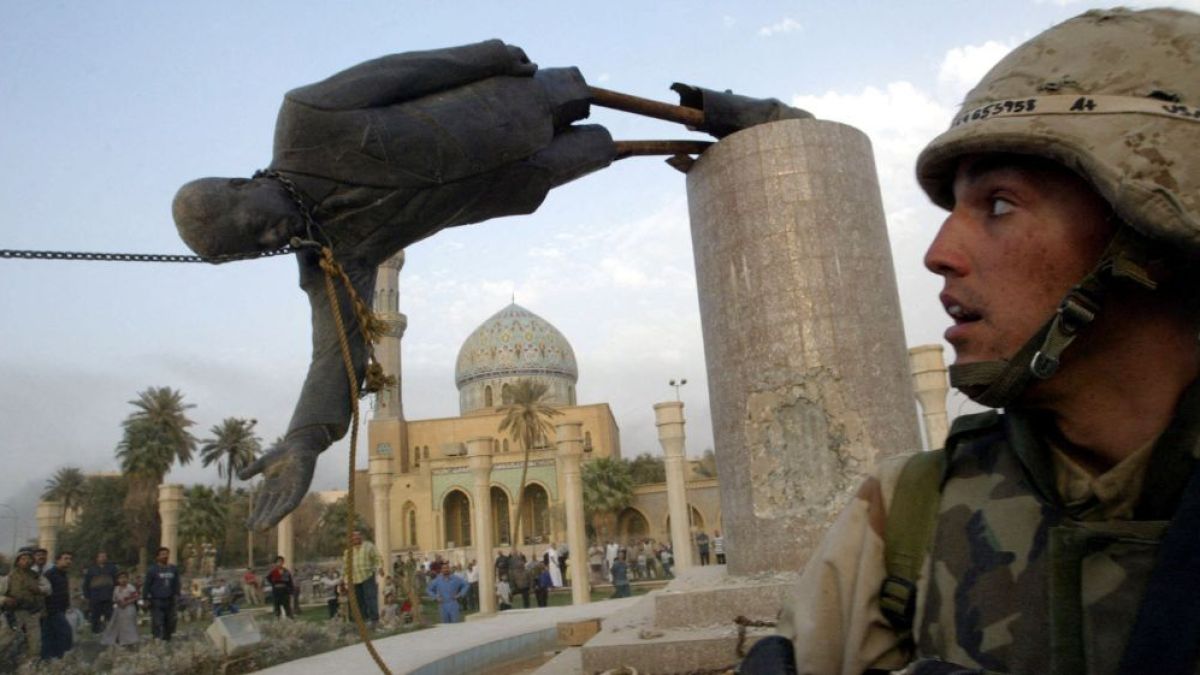How US Manipulates News to Suit Its Interests
This is a critical fact to note in an election year. Not only can the incumbent administration make news more easily than its challengers, but it can also better manage news as well.
Challengers must fight to get press coverage. And at this point in the Democratic primary process, with the nine candidates sharply attacking each other and the Bush White House, the news coverage that they generate usually has a negative tone.
The president, on the other hand, has been on an upswing. Congress supported his proposal to reform the way that senior citizens pay for expensive prescription drugs. The nation’s economy is continuing to show signs of recovery, and now Bush can bask in the glow of two significant foreign policy successes.
The Democrats’ dilemma is clear. While the president’s victories have produced simple straightforward headlines, their criticisms are more complicated and, to some ears, may sound like mere complaining.
Also of concern has been the ability of the administration to manage bad news and change the subject of coverage when they needed to.
Who remembered the Enron or Halliburton scandals of the summer of 2002? And whatever became of the challenges to the vice president’s dealings with oil company executives in planning the administration’s energy policy?
The war with Iraq, which was itself a “subject change,” provides yet another case in point. The raison d’etre of the war was the danger posed by the Baghdad regime’s possession of weapons of mass destruction (WMD) and the not so subtly implied links between Iraq and international terrorism.
The former is no longer mentioned, while continuing violence in Iraq is now noted as proof of the connection between terror and the former regime.
In the American public’s mind Sept. 11, Afghanistan and Iraq have all been morphed into a vague but clearly threatening reality — a “reality” that has been cultivated by carefully managed news.
In this picture the details have been ignored or deliberately pushed aside. What has been promoted as important to consider is that “we were attacked and we are fighting back — and our power has been decisive.” That Afghanistan is in a state of upheaval, that Pakistan may very well have been destabilized and that Al-Qaeda remains a very real threat – are not subjects for discussion. What matters is that “we are fighting terror” and, in this vague fight, we are told “we are winning”.
The coverage is managed and “spun” and, when needed, shifted to new topics — positive stories of victories. For a while, for example, as daily attacks against US forces were taking their toll, public support for the war was declining. This required management. To a degree, the effort has been successful. Americans and Iraqis continue to die, on a daily basis, but the stories of these deaths no longer generate front-page news coverage. For example, a series of attacks on US forces on Christmas Day resulted in four American deaths. A review of a number of major US daily newspapers found the story on page 39 in one, page 18 in another and not even appearing in another two.
In most instances, US deaths are reported buried in much larger press round-ups of Iraq-related news. In the past, they were featured as separate stories.
In a similar vein, Iraqi civilian deaths, resulting from actions by coalition forces, have all but disappeared from the US press. After pre-war polling showed that the US public was highly sensitive to such “collateral damage” deaths, the Pentagon refused to release such data forcing US reporters to hunt for these numbers on their own. Often times they had to go to Iraqi hospitals to learn casualty figures. Now, however, the coalition-administered Iraqi Ministry of Health has joined the Pentagon’s efforts by forbidding hospital staff from issuing any information to the international news media. Still some negative news will, on occasion, leak out, but it is episodic and incomplete.
As a result, the management of “bad news” has been quite effective, leaving the field wide open for coverage of what is termed the “larger” political news coverage of “progress”.
All of this is to say that the United States public is in the dark about much of what is happening or not happening in Iraq and Afghanistan and the magnitude of the challenges facing both countries. What they know is that the United States is facing an upgraded “Orange Alert”, “Saddam has been caught” and the “United States is still fighting and winning the long war against terror”.
Even with this, the public remains deeply divided. But with accurate news so difficult to come by in this “cloud of war” that has descended on the country, it is increasingly hard to discuss the merits, or even the reality, of this war or the foreign policy that led us into it.
This will continue to be the situation in the next year. Reality may, on occasion, break through and the press may respond with tough stories, asking hard questions. But as the past few weeks have shown the administration has more arrows in its quiver, and, as the situation warrants, they may decide when and how to use them.



